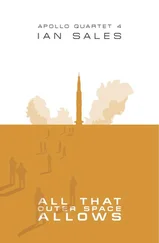So it’s not just about making the workforce more productive, it is to conceive of the workforce itself directly as another field of capitalist investment: all aspects of its “subjective” life (health, education, sexual life, psychic state, …) are considered not only as important for the productivity of the workers, but as fields of investment that can generate additional surplus-value. Health services do not only serve the interests of capital by way of making workers more productive; they are themselves an incredibly powerful field of investment, not only for capital (health services comprise the single strongest branch of the US economy, much stronger than defense) but for the workers themselves (who view paying health insurance as an investment for their future). The same goes for education: it does not only get you ready for productive work; it is in itself the field of a profitable investment for institutions as well as for individuals who invest in their future. It is as if, in this way, commodification not only becomes total, but also gets caught up in a kind of self-referential loop: working power as the ultimate “source of (capitalist) wealth,” the origin of surplus-value, becomes itself a moment of capitalist investment. Nowhere is this loop more clearly expressed than in the idea of the worker as a “self-entrepreneur,” a capitalist who decides freely where to invest his (meager) surplus resources (or, mostly, resources acquired through loans): into education, health, housing property … Does this process have a limit? When, in the very last paragraph of his essay, Balibar approaches this question, he strangely resorts to a Lacanian reference, to Lacan’s logic of non-All (from his “formulas of sexuation”):
This is what I call a total subsumption (after “formal” and “real” subsumption) because it leaves nothing outside (no reservation for “natural” life). Or, anything that is left outside must appear as a residue, and a field for further incorporation. Or must it? That is of course the whole question, ethical as much as political: are there limits to commodification? Are there internal and external obstacles? A Lacanian might want to say: every such totalization includes an element of impossibility which belongs to the “real”; it must be pas tout, or not whole. If that were the case, the heterogeneous elements, the intrinsic remainders of the total subsumption, could appear in many different forms, some apparently individualistic, such as pathologies or anarchist resistances, others common or even public. Or they may become manifest in certain difficulties in implementing the neoliberal agenda, such as the difficulty of dismantling a Medicare system once it has been legalized. 9
What Balibar says here is, for a Lacanian, very strange. He condenses (or, rather, just confuses) the two sides of Lacan’s formulas of sexuation, and simply reads exception as non-All: the totality of subsumption is non-All since there are exceptions that resist being subsumed to capital. But Lacan precisely opposes non-All and exception: every universality is based on an exception, and when there are no exceptions, the set is non-All, it cannot be totalized. (An interesting example of exception to the politically correct control of public speech are rap lyrics: there you can say it all, celebrate rape, murder, etc., etc. Why this exception? The reason is easy to guess: blacks are considered the privileged image of victimhood, and rap the expression of the misery of black youth, so the brutality of rap lyrics is absolved in advance as the authentic expression of black suffering and frustration.) This opposition should also be applied to the topic of subsumption: one should pass from the search for exception, for those who resist (universal) subsumption and are as such the “site of resistance,” to endorsing subsumption without exception and count on its non-All. The subsumption of individual lives to which Balibar refers cannot be reduced to a particular case of universal capitalist subsumption; they remain a particular case which, on account of its self-relating nature (the workforce itself becomes capital), redoubles the production of surplus-value.
In Marx’s critique of political economy there are two main cases of universality through exception: money, workforce. The field of commodities can only be totalized through a special commodity which functions as a general equivalent of all commodities but is, as such, deprived of use-value; the field of the exchange of commodities only gets totalized when individual producers not only sell their products on the market, but when the workforce (as a commodity whose use-value is to generate surplus-value) is also sold on the market as a commodity. So maybe there is a third case here: when this commodity, which produces surplus-value, itself becomes an object of capital investment bringing surplus-value, so that we get two types of surplus-value: the “normal” surplus-value generated by the products of the workforce, and the surplus generated by the production of the workforce itself. A nice example of Hegel’s insight into how the Absolute always involves self-splitting and is, in this sense, non-All: with the production of workforce itself as a field of capital investment, the subsumption under capital becomes total – but, precisely as such, it becomes non-All, it cannot be totalized, the self-referential element of the workforce itself as a capital investment introduces a gap that introduces imbalance into the entire field. For example, what do the enormous investments in education actually amount to? Many empirical studies demonstrate that most of higher education is not really of use for the reproduction of capital – even business schools actually do very little to train individuals to become effective managers. Consequently, although the media bombard us with the message that education is crucial for a successful economy, most college studies are irrelevant for business purposes. This is why state and business institutions complain all the time about how the humanities serve no purpose, and how universities should be made to serve the needs of actual life (i.e., of capital). But what if this, precisely, is what makes our enormous educational system so precious? It serves no clearly defined goal, it just multiplies “useless” culture, refined thinking, sensitivity for art, etc. Consequently, we find ourselves in a paradoxical situation: at the very moment when, formally, even education gets more and more subsumed under capital as a field of investment, the actual result of this subsumption is that enormous amounts of money are spent on the cultivation of knowledge and art as its own aim. We thus get hundreds of thousands of highly educated individuals who are of no use to capital (who cannot find jobs). But instead of protesting against this meaningless spending of financial resources, should we not celebrate this result as an unexpected sign of the expansion of the “realm of freedom”?
Maybe this gap can function as a source of hope, maybe it opens up the possibility of radical change: the logic of capital gets threatened not from some external nonintegrated rest, but from its own inner inconsistency, which explodes when subsumption gets total.
1 4. Quoted from http://crisiscritique.org/april2019/milner.pdf.
2 5. I rely here heavily on Maria Chehonadskih, “Soviet Epistemologies and the Materialist Ontology of Poor Life: Andrei Platonov, Alexander Bogdanov and Lev Vygotsky.” Unpublished manuscript, from which all non-attributed quotes are taken.
3 6. Etienne Balibar “Towards a New Critique of Political Economy: From Generalized Surplus-Value to Total Subsumption,” in Capitalism: Concept, Idea, Image (Kingston: CRMEP Books, 2019).
4 7. Balibar, “Towards a New Critique of Political Economy,” p. 51.
Читать дальше












